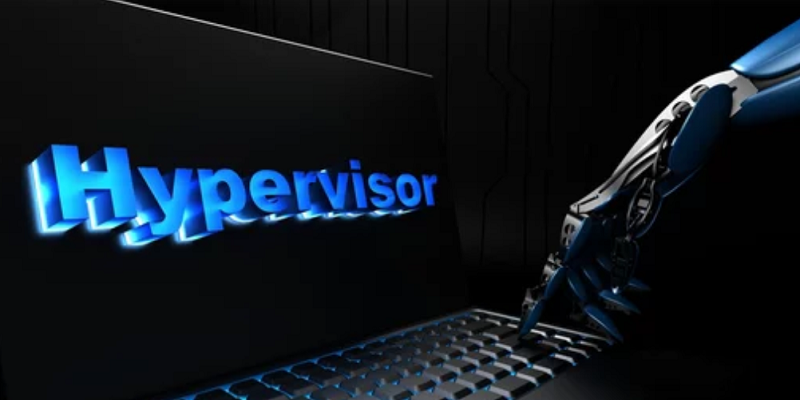Virtualization is the process of creating a virtual version of an operating system, application, or resource such as storage or network. It involves creating multiple virtual environments on a single physical machine. Virtualization has become an essential technology for businesses of any size, as it allows them to optimize the use of their hardware resources, increase efficiency, and reduce IT costs. This technology has revolutionized how businesses use computers by solving the problem of hardware failure with an additional layer between the operating system and physical hardware.
The Importance of a Hypervisor Layer
The hypervisor is a crucial component in virtualization technology. It is a layer of software that sits between the physical hardware and the operating system, creating multiple virtual machines that share the hardware resources of a single physical machine. The hypervisor layer provides isolation between virtual machines, ensuring that they do not interfere with each other, and helps allocate resources such as memory, storage, and processing power. With virtualization, the hypervisor allows for better resource allocation, improved troubleshooting, and backup and recovery capabilities.
Types of Hypervisors: Type 1 and Type 2
There are two types of hypervisors: Type 1 and Type 2.
Type 1 hypervisor: native or bare-metal hypervisor
A Type 1 hypervisor, also known as a native or bare-metal hypervisor, runs directly on the physical hardware, reducing latency and increasing performance. It is designed to work without an operating system, allowing it to allocate resources exclusively between virtual machines. One of the most significant advantages of a Type 1 hypervisor is that it provides excellent fault tolerance by quickly moving all virtual machines to other physical hardware if the underlying hardware fails. Type 1 hypervisors require management console software to manage the hypervisors and guest operating systems.
Management console software
Management console software provides a central location to manage and configure virtual machines. The management console allows administrators to monitor virtual machine performance, create and modify virtual machines, and adjust resource allocation.
Fault tolerance
Type 1 hypervisors provide excellent fault tolerance by continually monitoring hardware health and moving virtual machines to another physical machine if a fault occurs. This process is called high availability, and it prevents downtime due to hardware failures.
Over-allocation
A Type 1 hypervisor allows over-allocation. This means that each operating system can believe it has more physical resources than it actually does, and the hypervisor will only provide resources on an as-needed basis. While this optimizes resource usage, it can lead to contention issues if there is an over-allocation of resources.
Type 2 Hypervisor: Hosted Hypervisor
Type 2 hypervisors, also known as hosted hypervisors, run on top of an operating system. The hypervisor shares resources with the host operating system, limiting its performance and reliability. Hosted hypervisors do not require management console software and are easier to configure, making them more suitable for personal or non-enterprise use.
Management console software
Since Type 2 hypervisors run on top of an operating system, there is no concept of managing the hypervisors or guest operating systems on their own. Although some Type 2 hypervisors have a management console for the entire system, there is no clear separation between the hypervisor and the operating system.
Over-allocation
Type 2 hypervisors allow for over-allocation, but care must be taken when distributing resources among all the different instances and the host operating system. If the host operating system does not have enough resources, it may crash everything, including all virtual machines running on the hypervisor.
RAM Distribution
In a Type 2 hypervisor, distributing RAM among all the instances is critical. Each instance requires a minimum amount of RAM to operate, and if not allocated correctly, it can affect the overall performance of the system.
Resources and Host OS in a Type 2 Hypervisor
Hosted hypervisors share resources with the host operating system, which limits their performance and reliability. The performance of both the host operating system and any applications running on top of it may affect the overall performance of the system.
Choosing the Right Hypervisor
Choosing the right hypervisor depends on the organization’s size and requirements.
Type 1 hypervisor for larger organizations
Type 1 hypervisors are best suited for larger organizations that require better resource allocation and fault tolerance. They allow for a central management console for all the hypervisors and guest operating systems, providing a single point of administration and monitoring.
Type 2 hypervisor for personal or smaller-scale use
Type 2 hypervisors are more suitable for personal or smaller-scale use. They do not require additional management software, are easier to use, and can run on top of an existing operating system. Type 2 hypervisors are a cost-effective solution for small businesses that have fewer hardware resources.
Virtualization technology provides businesses with benefits such as optimized resource usage, increased efficiency, and reduced IT costs. The hypervisor layer is a critical component in virtualization that allows for better resource allocation and increased reliability. Choosing the right hypervisor depends on the organization’s size and requirements. Type 1 hypervisors are best suited for larger organizations, whereas Type 2 hypervisors are more suitable for personal or smaller-scale use.

